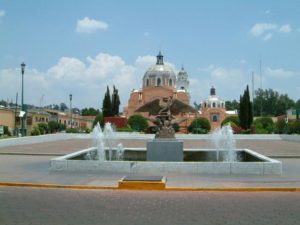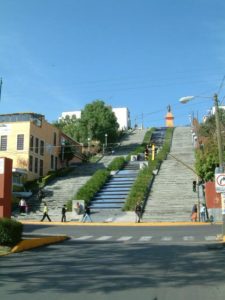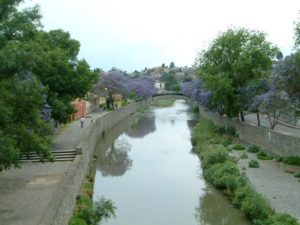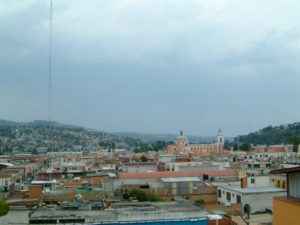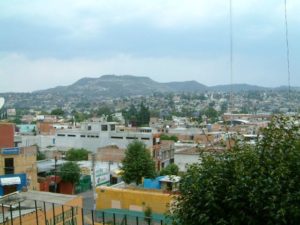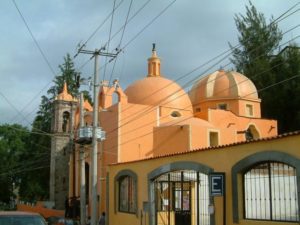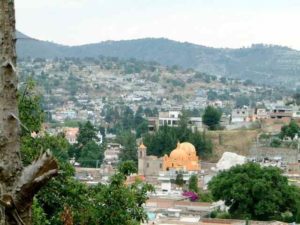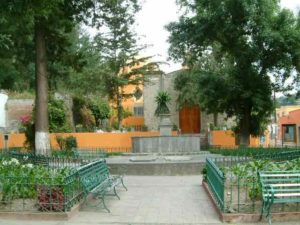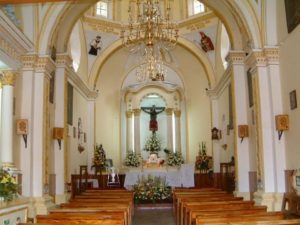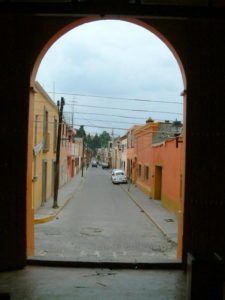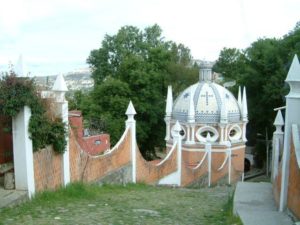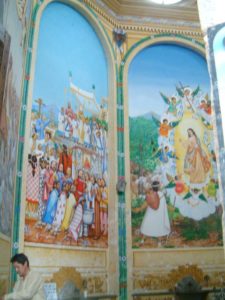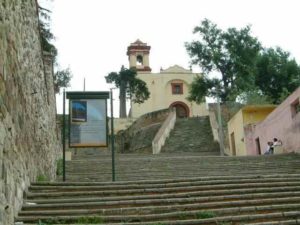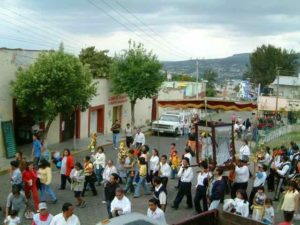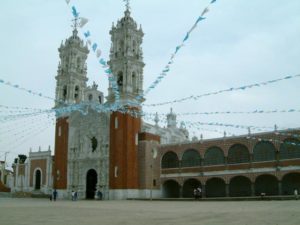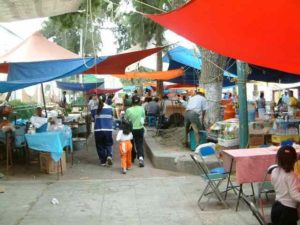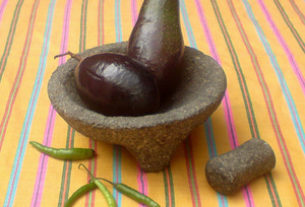The city of Tlaxcala (pronounced tlas-kala) is the capital of the State of Tlaxcala. Its small town atmosphere belies a listed population of 69,000. Indeed it is a sharp contrast to the activity of Puebla just 30 km south. The city has a population of about 70,000 and is at 7,382 ft. asl. (Pictures taken May 2, 2004)
Tlaxcala is one of the oldest cities in the country; in 1535, Carlos V, King of Spain, granted it a coat-of-arms and this was the first place where a bishopric was founded. The plan of this city differs from that of other colonial cities in that its main church was not built next to the Government Palace, nor even on the main square. Phillip II awarded it the title of “most noble and most loyal city of Tlaxcala”, in 1563.
Tlaxcala is one of “The Fifteen Exceptional Cities of Mexico”, a selection which we made a few years ago to include those Mexican cities which have unique characteristics.
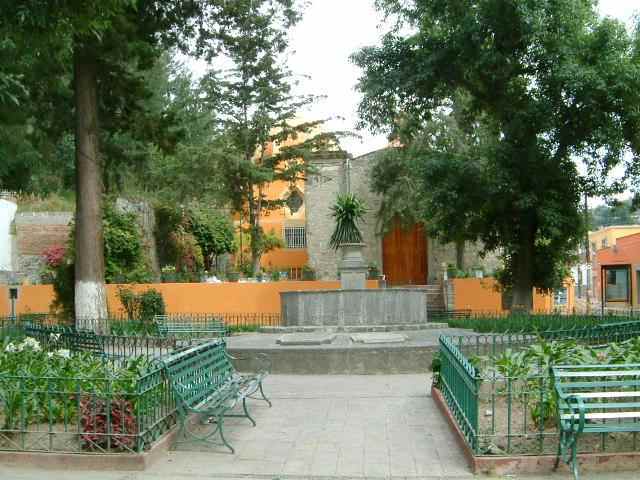
Its Plaza de la Constitución de 1812 (that of the Spanish Monarchy) is one of the most beautiful plazas in the republic; it is surrounded by arcades with colonial buildings, painted in earthy colors: orange, brick, dark yellow, light brown and sepia. The resulting architecture is amazingly attractive and harmonious. Other points of interest in this extraordinary city are: the Capilla Real de Indios, now the Palace of Justice, built in 1528 in honor of the Indigenous and Spanish nobility; the Plaza Xicoténcatl, surrounded by several good restaurants and from where a walkway begins up to the Ex-Convento de San Francisco where you will find the Regional Museum, one of the most interesting in México, since it houses a pillory where the conquistadors bombarded the Indians in order to subdue them, a library and a newspaper collection.
The Ex-Convento de San Francisco founded in 1524, with a marked Moorish influence in its Spanish architecture, is now the Cathedral of Nuestra Señora de la Asunción (Our Lady of the Assumption). This is considered one of the earliest and most beautiful buildings constructed in New Spain. In the interior of this convent, the roof is possibly the most distinguished architectural element of the entire building: a superb combination of carved and painted wood, also Moorish in style. Hernán Cortés ordered various Catholic rituals to be observed here, including the baptism of Xiconténcatl, before he departed from this city to continue the Conquest.
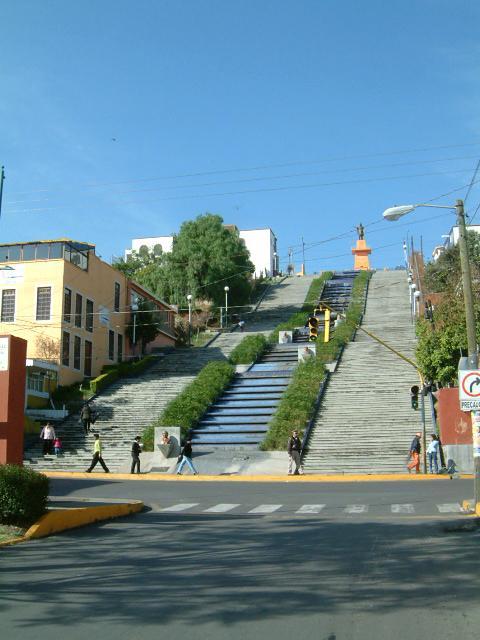
The Bull Ring (Plaza de Toros) which has the peculiarity, unlike any other in the country, of having the upper part of its bleachers formed by the tower of the ex-convent of San Francisco, which is only a few paces further away, is another sight which is a must-see before leaving Tlaxcala. Other captivating attractions which you shouldn’t miss are the City Hall (Casa del Ayuntamiento), in the Portal Hidalgo, which was originally a private dwelling, the Alhóndiga, joined to it, which, with its lovely sixteenth century portico decorated with floral designs, served as the warehouse for storing maize and wheat paid in tribute, and is now the Traffic and Public Security Department, and the Xicoténcatl Theater, neoclassic in style with a grey sandstone facade and wrought-iron lamps.
Ocotlán, a well-known district of the city, located a few minutes from the Plaza of the Constitution (Plaza de la Constitución) on a hill to the east. Standing majestically here is the extremely famous Basílica y Santuario de Nuestra Señora de Ocotlán. The original structure, in 1541, was modest. The actual church, dating from 1670, is rightly considered, given its wonderful architecture, one of the religious gems of all Mexico. Its richly decorated facade, of plaster and pieces of porcelain is its most outstanding feature, causing the onlooker to feel that maybe it is made of a delicious sugar-icing, which with its towers and ample atrium serves to identify immediately the admirable and exceptional classic Tlaxcaltecan style, giving us an emotional religious high. On seeing the interior, with its almost overwhelming, multicolored and resplendent ornamentation, especially that of the Alcove (camarín) of the Virgin, this marvelous sensation is doubled. These splendid examples of Mexican churrigueresque art were the work of Indian artist Francisco Miguel Tlayoltehuanitzin during 25 years of tremendous dedication. The paintings by two famous artists of the colonial period, Cristóbal de Villalpando and Juan de Villalobos, magnificent artistic creations, serve to further heighten our amazement on a visit here.
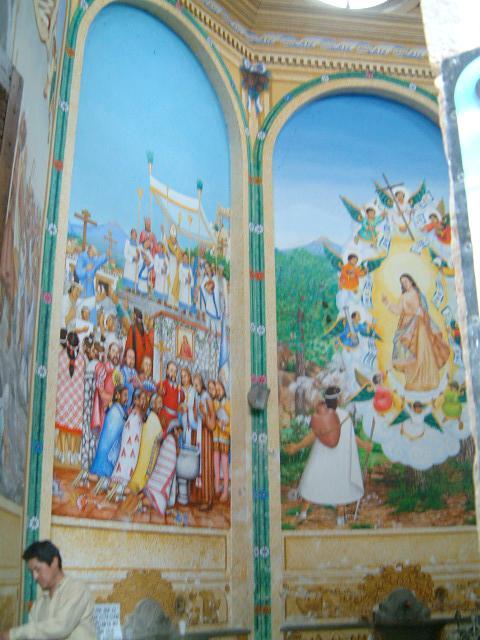
Each year, Ocotlán celebrates the fiesta of its Virgin the first and third Wednesday in May.
The Palacio de la Cultura, a beautiful late neoclassic building, of 1939, where classes of other scholastic levels were given for years, is now the Institute of Higher Studies (Instituto de Estudios Superiores). Every two weeks it publishes a listing of the main cultural events taking place in the state. The art nouveau-style Juárez Palace is in a tone typical of this city. Until 1982 it was the Legislative Palace and since 1987, the Tourism Secretariat (Secretaría de Turismo). It is located behind the Government Palace (1545) which houses an impressive work of art which reproduces, with all the feeling and color of the ancient codices, historical scenes depicting the origins and struggles of the legendary Tlaxcalteca people, painted by Tlaxcala native Desiderio Hernández Xochitiotzin, a contemporary of the masters Diego Rivera and Rufino Tamayo.
Besides the eighteenth century parish church of San José, a fine example of Tlaxcaltecan baroque, constructed on the grounds of what was once a Marian hermitage of the sixteenth century, it is worth visiting the Tlaxcala Museum of Popular Arts and Traditions, located by the side of the canal down which the River Zahuapan flows. The museum has revolutionized the method of operating a handcraft museum; apart from having 3,000 objects on display, the artisans themselves, besides making their creations for sale right on the spot, also act as the guides, explaining this so distinctively Mexican historical and cultural world. They have collected books and handcrafts from all over the world. Visit here and don’t forget to sample the delicious regional food served in its small fonda or restaurant.
Other important sights include the Juárez Plaza and the Exhibition Center, where the state’s annual fair is held. The most important street market (tianguis) in the state, in terms of the variety of items on sale, is held in the city every Saturday. The incomparable character of this lovely city doesn’t only create a pleasing impact on the eye as you walk its streets but also from the slopes above where you can also appreciate the traditions and culture it still preserves. One curious thing is the system of traffic signs which are not only just as easily read as usual but are designed as if they were made of perforated blue paper, a detail which seems to us to be so singularly ingenious it would be worth copying in every city in the country.

